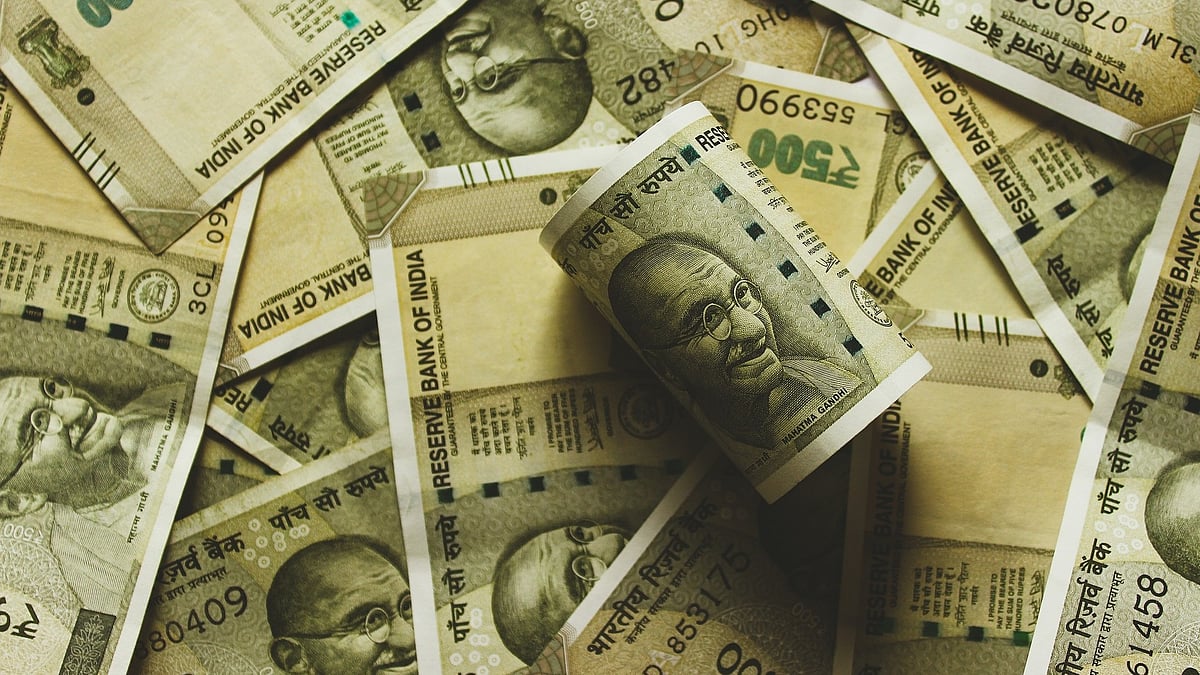Rupee Plummets to Historic Low of 83.21 Against US Dollar Amidst Global Economic Challenges

Rupee Plummets to Historic Low of 83.21 Against US Dollar Amidst Global Economic Challenges
In a stark reflection of the ongoing economic challenges, the Indian rupee touched a historic low, closing at 83.21 against the US dollar on Thursday. This development has sent ripples across financial markets, sparking concerns and discussions about the state of the Indian economy. The rupee’s fall of 7 paise comes on the heels of a surging greenback, rising bond yields, and escalating crude oil prices, creating a perfect storm of factors that have contributed to this alarming depreciation.
The Greenback’s Ascendancy
At the heart of this financial turbulence lies the mighty US dollar. The dollar has been flexing its muscles on the global stage, bolstered by a variety of factors including robust economic recovery, monetary policy changes, and geopolitical events. As a result, many currencies around the world, including the Indian rupee, have faced increasing pressure.
The strengthening of the US dollar has made it more expensive for India to import goods and services denominated in dollars. This, in turn, has a cascading effect on the cost of living for everyday citizens, as many essential items like oil, electronics, and pharmaceuticals are heavily reliant on imports priced in dollars. Consequently, the cost of these goods may rise, affecting the household budgets of millions.
Rising Bond Yields
Another contributing factor to the rupee’s decline is the surge in bond yields. Bond yields, essentially the interest rates on government bonds, have been climbing both in India and globally. This shift has created a more attractive investment option for foreign investors, who have consequently diverted their funds away from the Indian markets.
Higher bond yields can have a detrimental impact on the stock market as well. As more investors flock to bonds, they may withdraw their investments from the equity markets, leading to a decrease in stock prices. This, in turn, can erode investor confidence and have a cascading effect on the overall economy.

Crude Oil Prices and India’s Vulnerability
India, as a major importer of crude oil, is particularly vulnerable to fluctuations in oil prices. The recent surge in oil prices has placed an additional burden on the Indian economy. When oil prices rise, it not only affects the cost of fuel but also has a domino effect on transportation costs, inflation rates, and ultimately, the overall economic health of the nation.
With the ongoing geopolitical tensions in various oil-producing regions and the delicate balance of supply and demand in the global oil market, the volatility in oil prices is expected to persist. This adds yet another layer of uncertainty for the Indian economy and its currency.
Impact on Everyday Life
The depreciation of the rupee against the US dollar directly affects the purchasing power of the average Indian citizen. As the rupee weakens, it takes more rupees to buy the same amount of goods and services priced in dollars. This means that imports, which constitute a significant portion of India’s consumption, become more expensive.
From electronics to automobiles, many products have components that are imported or are priced based on international markets. The cost of these goods could potentially rise, making them less accessible to the average consumer. This can lead to reduced consumer spending and, consequently, slower economic growth.
Government’s Response
In response to these economic challenges, the Indian government has a multi-faceted approach. Central banks often intervene in currency markets to stabilize the exchange rate, and the Reserve Bank of India (RBI) is no exception. The RBI may use its foreign exchange reserves to purchase rupees, thereby increasing demand for the currency and potentially raising its value.
Additionally, the government may explore measures to reduce the country’s reliance on imports and increase exports. By promoting domestic manufacturing and enhancing export-oriented industries, India can reduce its vulnerability to global economic fluctuations.
Investor Sentiment and Economic Outlook
The rupee’s slide to a record low has raised concerns among investors, both domestic and international. Foreign investors may be more cautious about putting their money into the Indian market, given the currency’s instability. This could result in a decrease in foreign direct investment (FDI) and portfolio investment, impacting India’s growth prospects.
Domestic investors may also adopt a more cautious approach, preferring to invest in safer assets like gold or foreign currencies rather than the stock market. This could lead to a slowdown in the flow of funds into productive sectors of the economy.

However, it is essential to note that currency markets are highly unpredictable, and the rupee’s depreciation may not necessarily persist in the long term. A variety of factors, including government policies, global economic conditions, and geopolitical events, can influence exchange rates. Therefore, while the current situation is a cause for concern, it is not necessarily indicative of a prolonged economic downturn.
Conclusion
The record-low closing of the Indian rupee at 83.21 against the US dollar is a stark reminder of the complex and interconnected nature of global economies. The confluence of factors such as the greenback’s ascendancy, rising bond yields, and surging crude oil prices has created a challenging environment for India’s currency and its economy.

While government interventions and policy measures can help stabilize the situation, the long-term outlook depends on a multitude of variables, both domestic and international. As India navigates through these economic challenges, it is essential for policymakers, businesses, and citizens to remain vigilant and adaptive in the face of a rapidly changing economic landscape. Only through a coordinated effort can India weather the storm and emerge stronger on the other side.




